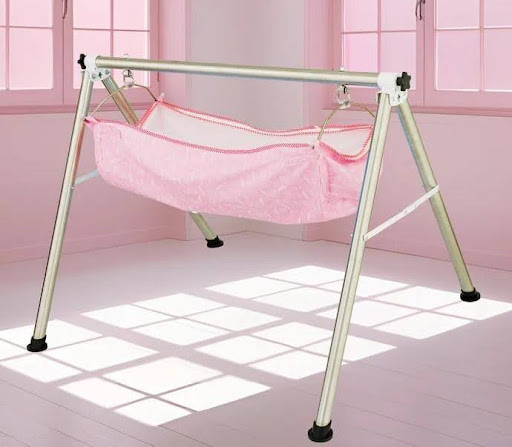A baby palna feels like a comforting part of early parenthood – the gentle rocking, the snug space, the way it helps your baby drift off so easily. It’s no surprise many families still rely on it.
But as peaceful as it looks, one big question often comes up: Is it safe for overnight sleep?
In this blog, we’ll take a closer look at how and when to use a palna, the key safety considerations and how you can make the best sleep choices for your baby.
Understanding What A Baby Palna Is
A baby palna functions as a cradle or jhula, which provides gentle rocking motion to keep infants comfortable while they sleep. The device functions as a basic yet effective solution, which duplicates the natural rocking movement that babies experience during their time in the womb. Babies achieve faster sleep in palnas because the rocking motion creates a sense of safety. This mirrors their comfort.
However, while it’s excellent for short naps and soothing, there are a few important points to consider before using it for overnight sleep.
Why Parents Love The Palna
Before we get into safety details, it’s worth noting why this traditional baby cradle swing remains popular:
- The natural rocking movement: Helps soothe babies who are experiencing fussiness.
- Compact Design: The product fits perfectly in bedrooms because it allows parents to maintain proximity with their child.
- Ease of Use: Simple setup, minimal maintenance, and often made from breathable fabric.
- Cultural Familiarity: The palna has been a family tradition for multiple generations, which makes it a reliable selection.
The baby palna provides these benefits. They create a comforting environment for babies during their early months because they require multiple naps throughout the day.
Is It Safe For Overnight Sleep?
The baby cradle swing provides a secure environment for brief naps under supervision but it needs to be used with caution during unsupervised nighttime sleep. Here’s why:
- Changing Sleep Positions
Babies move naturally as they sleep. In a swinging cradle, constant movement or tilting can make it harder for them to stay in a safe position — especially for newborns who can’t roll over or lift their heads yet.
- Airway Safety
A palna base that is soft can cause the baby’s head to tilt forward or sideward, which may restrict airflow. A hard and even surface provides the best conditions for achieving deep and restful sleep.
- Continuous Motion
Gentle rocking helps babies fall asleep, but long hours of motion through the night may overstimulate some babies. Once asleep, most infants rest better on a still surface.
A palna works well for naps, comforting, and bedtime routines but you should move your baby to a firm flat mattress after they fall asleep completely.
How To Safely Use A Baby Palna For Naps And Bedtime
You can continue using your palna with proper safety measures. The following safety guidelines need your attention:
- The baby should always be supervised during their time inside the palna.
- Verify proper installation by checking the strength of the stand or frame and the cradle’s position.
- Maintain a solid and flat base. Do not put any soft bedding or pillows inside the cradle.
- The motion must stop once your baby falls asleep. Allow them to rest without any movement.
- Avoid overnight swinging. Once your baby is asleep, gently move them to a cot or bassinet.
Tip: During the day, short supervised naps in the palna can actually help your baby learn to self-soothe and adjust to bedtime rhythms.
Alternatives For Overnight Sleep
If you need a palna for comfort but want a better solution for long sleep sessions, think about:
- A stationary baby cot or bassinet with a firm mattress and breathable sides.
- The automatic baby cradle swings let you set the swing duration, and they stop automatically after the selected time ends.
- The swaddles and sleep sacks offer the same cozy sensation of a palna while keeping the baby still.
These options provide the perfect combination of comfort and safety.
When To Transition From A Palna
Most babies outgrow a palna around 4–6 months, or once they start rolling, or pushing up on their hands. The appropriate moment arrives when they should begin using a crib or cot because this setup provides them with a secure environment for sleeping and unrestricted movement.
The early transition enables children to build their sleep patterns while protecting their safety during nighttime hours.
Final Thoughts: Using A Baby Palna Safely And Smartly
A baby palna is a lovely way to soothe your baby, especially during naps or quiet moments. Its gentle rocking can be comforting, but for overnight sleep, a flat and firm surface is the safer choice.
You don’t have to stop using the palna – just use it wisely. Let your baby relax in it during the day, then move them to a crib or bassinet for longer, unsupervised sleep.
Looking for a safe and cozy palna? Explore the beautifully crafted baby cradle swing options at TinyTyke – blending traditional comfort with modern safety.




